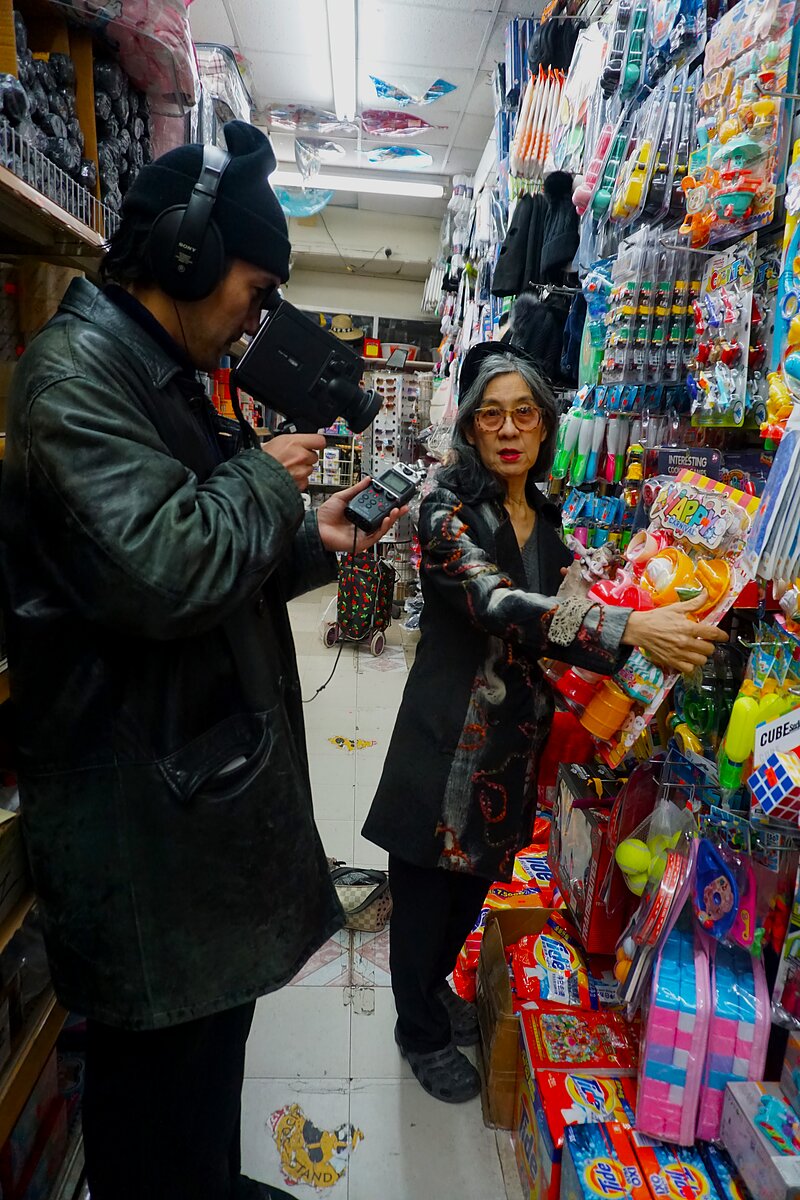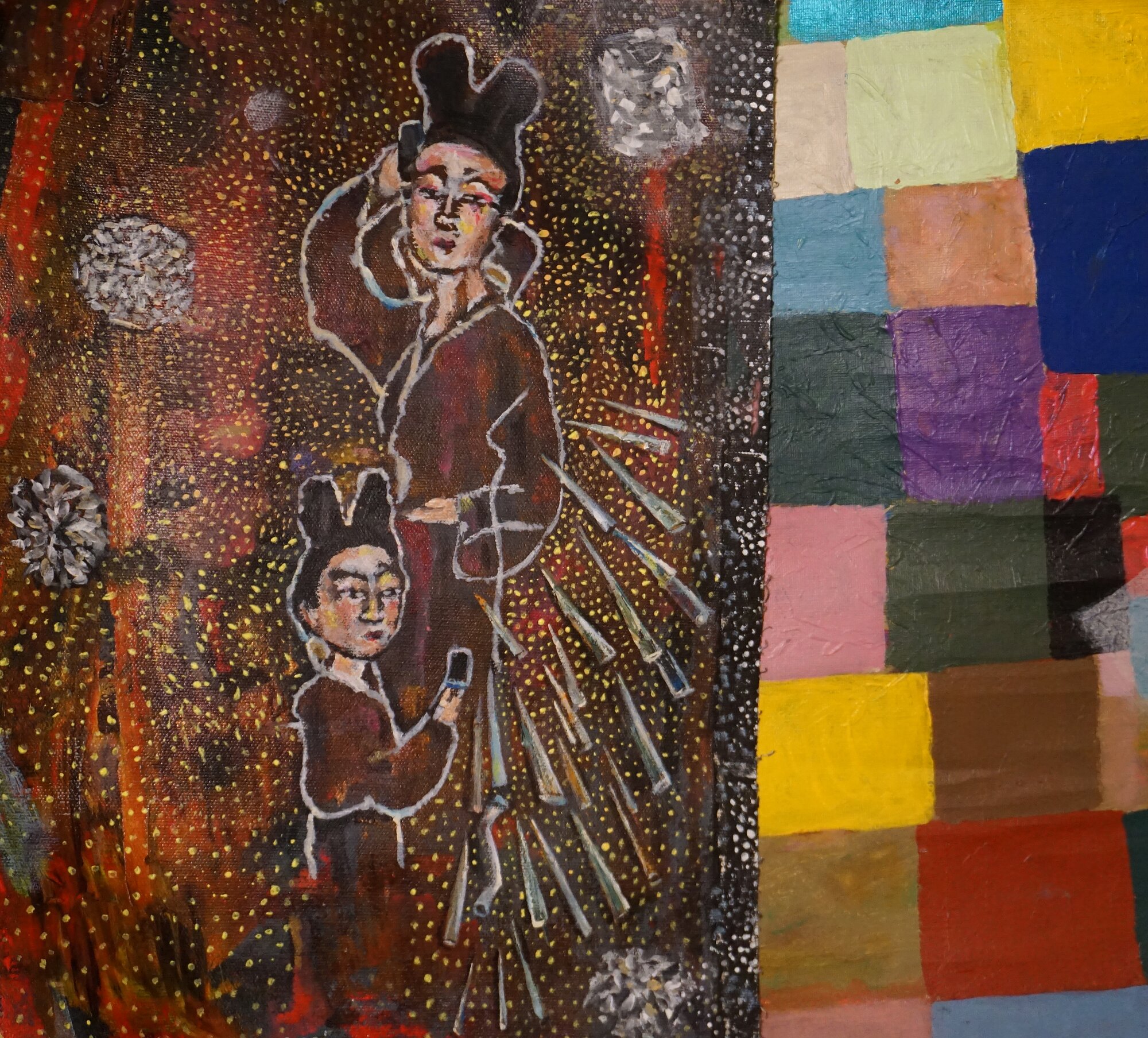Nina Kuo’s Chinatown
This past November, filmmaker/writer Connor Sen Warnick met with artist Nina Kuo in Manhattan’s Chinatown to discuss her work, life, and reflections on Asian American art today. “When I found her that afternoon, she was hanging new paintings on the side of a storefront on East Broadway,” said Warnick.
At work for nearly five decades in New York, Kuo is a pioneer of Chinese American art. Shapeshifting between painting, sculpture, collage, photo, video and sound art, her prolific body of work blends a unique mixture of ancient mythology with humor and fantasy, each piece creating its own universe. Kuo’s art has been collected by and exhibited at the Brooklyn Museum, MoMA, New Museum, and Library of Congress.
Beyond the lasting marks her artistic visions have made on AAPI culture, until one experiences the singular, unforgettable energy that Kuo possesses in person, a full understanding of her art does not feel complete. “I’ve been fortunate to get to know Nina over the past two years, as she was one of the elders who kindly shared her memories of early Chinatown activism with me as research for my upcoming feature film debut, CHARACTERS DISAPPEARING,“ said Warnick. “Nina also has a cameo appearance in the film.”
During this recent get-together, Warnick documented Kuo for a candid film portrait on Super 8mm as she guided him through the neighborhood, identifying significant landmarks in AAPI cultural history, as well as places of personal importance. “I’d like to extend a warm thank you to Nina’s partner, Lorin Roser, for being our unofficial production assistant for this interview, wheeling around equipment and wardrobe in their shopping cart—a familiar prop to those within Nina and Lorin’s orbit,” noted Warnick.
Warnick and Kuo’s conversation is transcribed below, accompanying Warnick’s film portrait.




